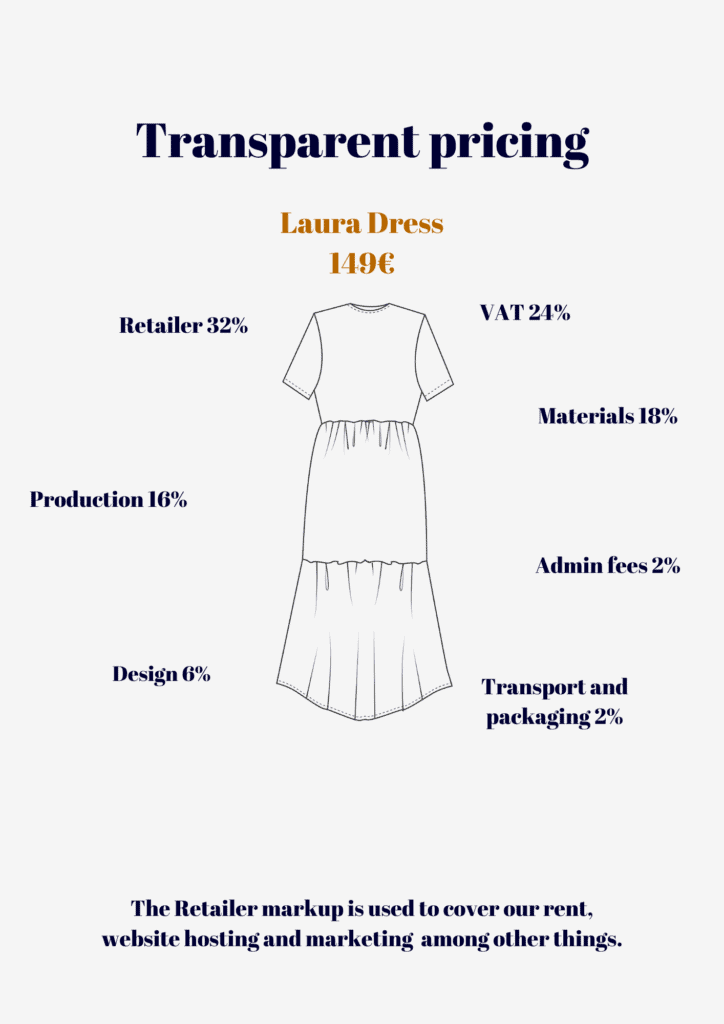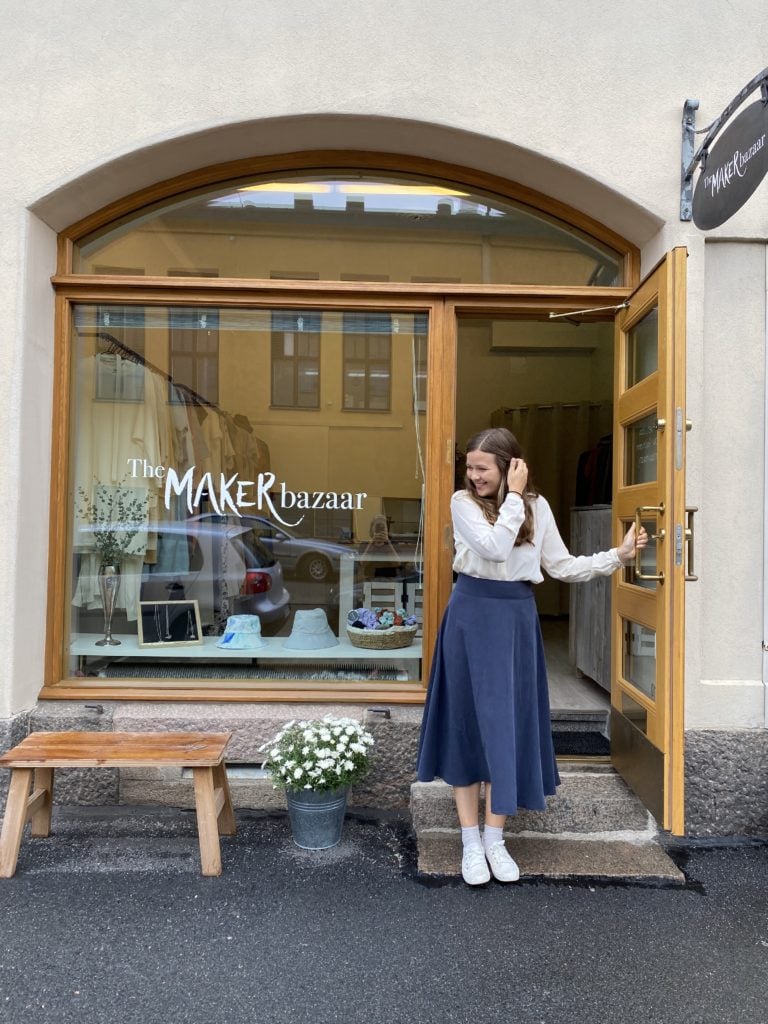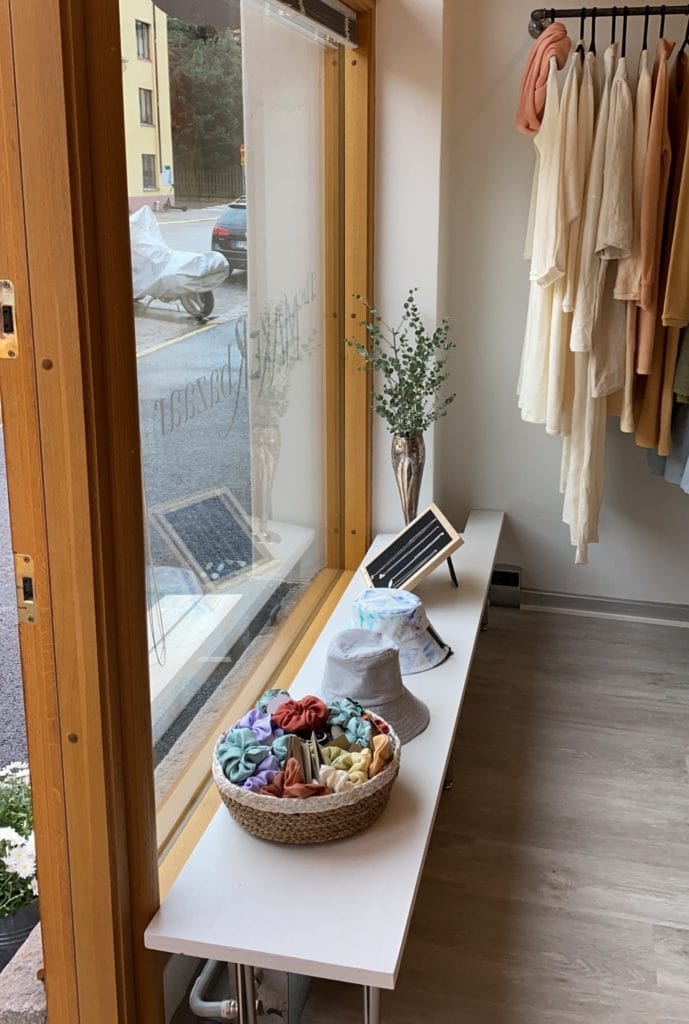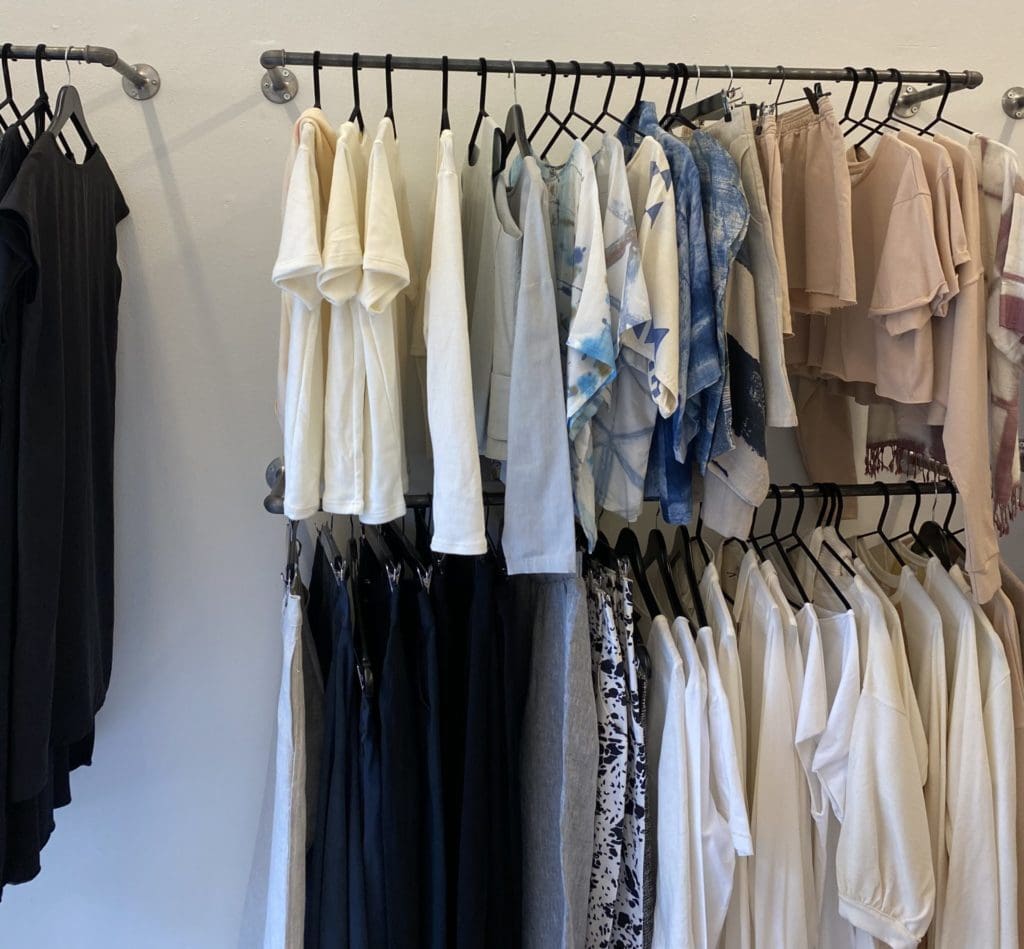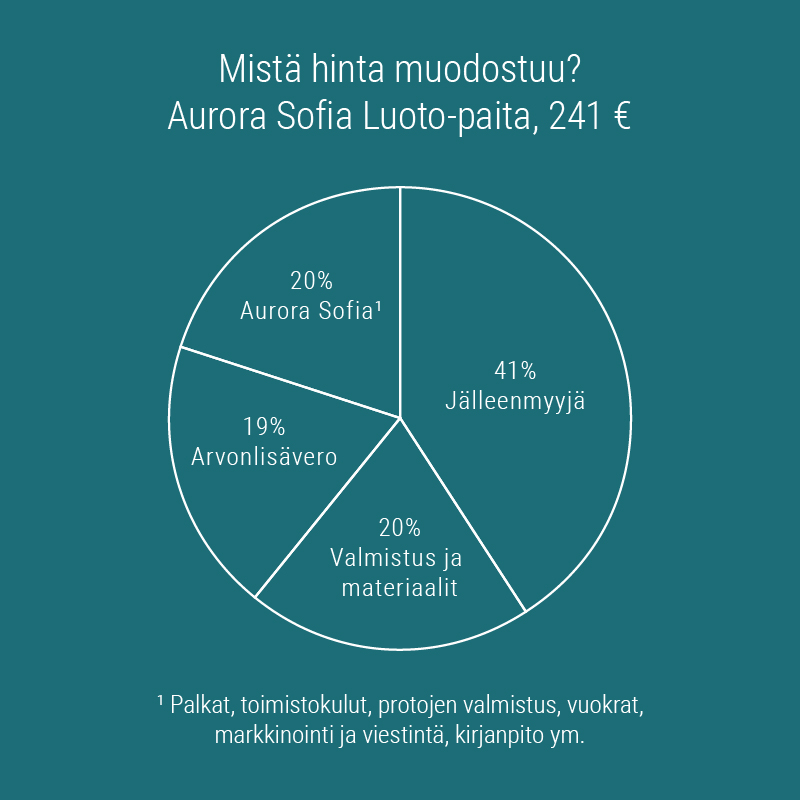Slow fashion at a reasonable price
There are people who feel that they can't participate in the slow fashion movement, because the prices of slow fashion garments are unreasonable. They argue, that a regular person can't afford to buy these products. Some even feel, that slow fashion brands aren't truly engaging in making the world a better place, but are only looking out for their own good. There have seen discussions of this online and I have encountered it in shop spaces as well. I would like to open up a frank discussion about pricing and transparency within the slow fashion movement.
Price and value are two quite different things. Many of our garments at The Maker Bazaar are completely unique and one of a kind and therefore their price is also higher than garments produced in batches. Each item of unique clothing is worked on for extensive periods of time, whether that is in the dyeing process, the knitting of the fabric or the designing of the unique print or pattern. The result resembles an art work, as it is a result of the creative process of a designer, only one has been made and the wearer gets something completely unique that speaks to them aesthetically. This is why our unique garments are more costly, but also inherently more valuable. Our products that are produced in batches are still produced on a very small scale and many are also made to order. This model allows brands to cater directly to their customers, but the prices tend to be slightly higher. Maybe the question we should ask ourselves before buying something new, is what do I value about this garment, what is the value of this garment to me and why do I value it? Perhaps you value the creativity of the designer, the craftsmanship of a seamstress or how precious the raw material is?
One way slow fashion brands have found to combat distrust from customers is transparent pricing. Through this, brands reveal the price structure of some or all of their products. These structures reveal how many precent of the end price of the garment goes to what and how much the brand actually gets at the end of the day. It’s a great opener for a discussion for something that has been kept secret for so long. For The Maker Collection, we are finally also sharing our price structures with you for the Laura Dress, but the structure is the same for all of our garments. We hope this can help you gain insight into how we work. We value all processes that go into the creation of a dress and all of them are seen in our price structure; we value the labour that goes into sewing the dress, the material used for making it, the design process and pattern making, the retailer that gets it to the customer and the packaging used for wrapping our clothes neatly to give to our customers. On top of this, the sale from the dress has to cover things like website hosting, rent, insurance, electricity and marketing. Considering all of this, we also want the price to be attainable to as many people as possible.
Through transparency, slow fashion brands have been able to differentiate themselves. Transparency is key in building trust, because you can’t sugarcoat or greenwash your price structure. When brands reveal their price structures, they are not hiding under any sweeping statements or clever marketing tricks. They don’t have to do this, but choose to do so in order to build a relationship of trust. They do not rely on creating mental images of quality and sustainability without any concrete proof. Slow fashion brands aim to be as open as possible through transparency. It also helps customers to understand how fashion brands function and how much garments should cost when they’re made fairly and well.
the question we should ask is what is the value of this garment to me
Often slow fashion brands are very open about their production processes, materials and supply chains on their websites. They explain where their fabrics are woven and from what fibres, what makes the quality superior and where it’s sewn. This tends to explain why the price is higher and why it is worth the investment. It doesn’t negate the fact that the price can still be too high for some. But to lower the price in the case of slow fashion garments would mean someone isn’t getting paid fairly for their labour: whether it’s the weaver, seamstress, designer or shop keeper. What we need to understand, is that slow fashion brands usually don’t take as large a cut as many other brands. Many even undervalue their own labour or product and end up not making a profit at all. So asking for discounts from slow fashion brands is not the right approach to making the fashion industry better or more accessible.
So is there a way for slow fashion brands to lower their price ethically somehow to make sure everyone can afford it? It’s a difficult question, because lowering prices usually means compromising on something: quality, sustainability or ethics. This is something we at The Maker are not willing to consider. We always advocate for the changing of our consumption habits. What we should do is simply buy less and buy high-quality, well-made items, so that you have to buy new clothes less frequently. When you buy slow fashion, you are buying well-made, good quality clothing. Quality lasts longer and pays itself back, as it has a higher resell value. When you buy slow fashion, you also start to hone in your own style more and feel less of a need to jump on the latest passing trends. It allows you to express yourself through timeless, non seasonal and unique items. If you ever feel like discussing quality and how to recognise it in a garment, feel free to pop into our shop to have a chat about it. An article about it will also be published soon.
we value all processes that go into the creation of a dress


